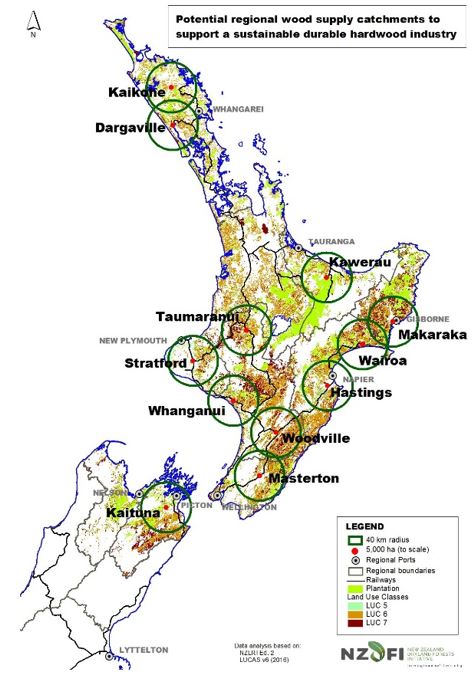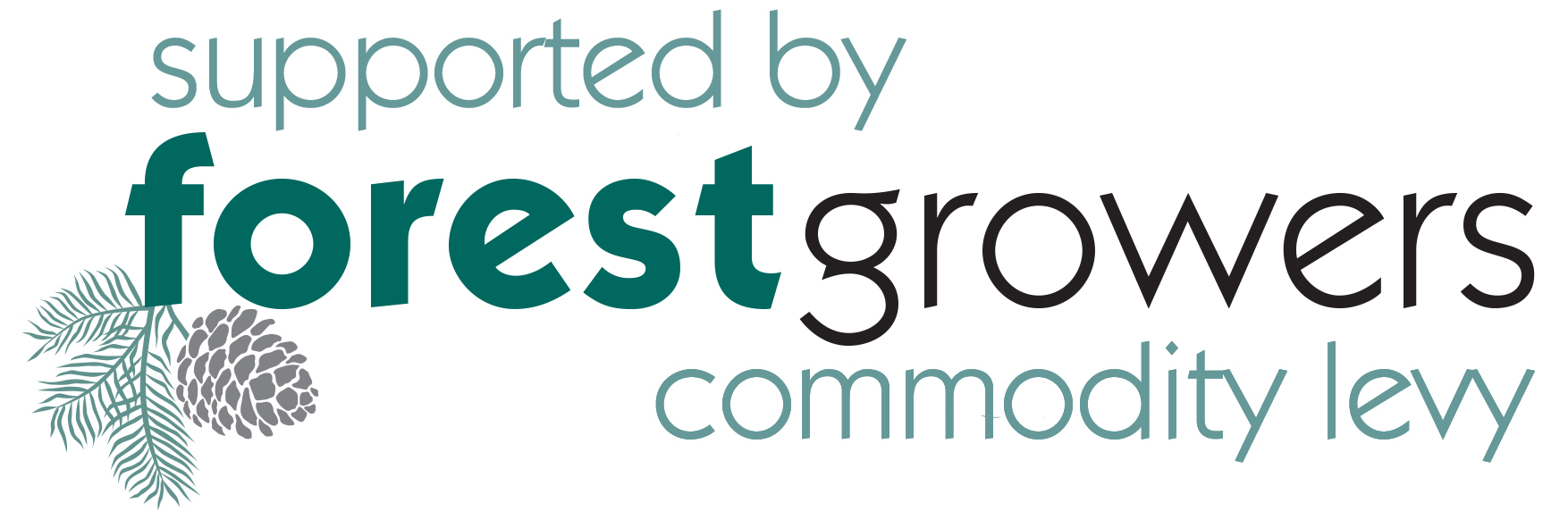Forest Growers Research Conference
Save the Date – 19th – 21st October 2021
Following Covid disruption in 2020 FGR is pleased to announce that its 2021 conference will be held at The Rutherford Hotel in Nelson on October 19th and 20th with local field visits on October 21st. Despite the huge success of our online 2020 event, we are pleased to be able to get people together in person, and support our original intent of doing so in Nelson. At the conference we will be discussing important research outcomes in the areas of digitisation, automation, robotics, genetics and alternative species research, as well as hear about advances in research of other key issues, such as climate change and biosecurity. John Roche, Chief Science Advisor within MPI will be speaking at our dinner, outlining his experiences with disruption as a result of Mycoplasma bovis and Covid.
In addition, we are very grateful for the support offered by Tasman Pine Forests and Nelson Pine Ltd who have agreed to host our visits on October 21st to their Pigeon Valley estate as well as the LVL Plant, respectively.
Registration for the event will be opening in July so make sure that you book your spot early.
Biosecurity Conference
Forest Biosecurity Conference 2021: Ka mua, ka muri: Looking back to move forward.
The Forest Owners Association, with support from the Forest Growers Levy Trust, Biosecurity New Zealand and Scion will be holding their joint annual Forest Biosecurity Conference on 12- 13 May 2021 at Scion in Rotorua.
The theme of the 2021 Forest Biosecurity Conference is Ka mua, ka muri: Looking back to move forward. Basically, this highlights that there is a lot of learn from the experiences of the past and those who have come before us, and that this can inform the future and how we take forest biosecurity forward. It is time to take stock of what has been achieved in forest biosecurity, reflect on how this was achieved and then look forward to where we should go from here.
Date: 12 – 13 May 2021
Venue: Rimu Room, Scion: Tītokorangi Drive (formerly Long Mile Rd), Rotorua
Registration: To register, please complete this registration form
Harvesting options for small woodlots
Harvesting approaches and access to cost effective technology for small woodlot owners can be challenging. These challenges are often compounded by establishment decisions that resulted in woodlots being poorly situated relative to necessary infrastructure, such as public roads. In addition, traditional harvesting equipment can result in farm damage as well as be forced to operate at sub-production levels, which can severely affect harvest returns for small growers. To help support more informed choices for small woodlot owners Forest Growers Research recently commissioned a report looking at the viability of adapted farm equipment, as potential alternatives to traditional harvesting equipment. The work, undertaken by Forme Consultants, explored the potential of a Valtra forwarding tractor and concluded that such solutions provide a cost-effective and viable option for harvesting small farm woodlots. More detailed information on this report can be found here: VALTRA Tractor: A forwarding solution for small forest growers
In a second report, Forme Consultants looked at the potential for reconfigured MAN fertiliser spreader trucks, as another possible forwarding solution. As with the modified Valtra tractor study, it was concluded that MAN bush trucks provide a cost effective and physically viable option for harvesting and using specialized fertiliser spreaders as the basic structure, meant that these systems were well suited to use in farm settings. More detailed information on this report can be found here: MAN Bush Trucks: A forwarding solution for small forest growers
Understanding risk and climate change adaptation
As part of the ongoing Resilient Forests research programme, Scion together with Forest Growers Research (FGR) is undertaking a study on “Risk perception and climate change adaptation”. We want to increase the capability of forest owners / the forestry sector to manage future risks and uncertainties and improve the resilience of the forestry sector in New Zealand using innovative and integrated approaches. The results of this survey will provide baseline information of what concerns most of the forest owners, forest managers, and consultants. We will use the results to explore barriers and facilitators of climate change adaptation. We would be grateful if you could answer the survey SURVEY MONKEY . It will take around 10 minutes. Individual answers will be treated with confidentiality, and no personal data is gathered or stored. If you wish to receive a copy of the results, please say so, by using the box at the end of the questionnaire.
The NZ Dryland Forests Initiative
– long-term plans for regional hardwood supply catchments come into focus
The New Zealand Dryland Forests Initiative (NZDFI) is a partner in FGR’s Speciality Wood Products Research Partnership (SWP). In 2019, the NZDFI produced a strategy in partnership with the SWP: Durable eucalypts: A multi-regional opportunity for New Zealand’s drylands. Since then, NZDFI’s plans for regional wood supply catchments have come more clearly into focus.
NZDFI’s vision is for twelve regional wood-supply catchments to be developed between now and 2050. Each catchment will be centred on a processing site; potential locations for these have been identified (Map 1). A total area of 60,000 ha of new eucalypt forests will need to be planted over the next 30 years, 5,000 ha in each catchment. Each regional hardwood industry has the potential to generate an annual GDP of $82.5 million and create over 200 regional jobs. More detailed planning with regional partners in priority regions of Hawke’s Bay, Wairarapa and Marlborough is underway. Market opportunities for durable timber products over $1 billion per annum have been identified.
And from 2021, the first generation of NZDFI’s improved planting stock will become available, and will be marketed under the Xylogene brand.
Visit NZ Dryland Forests Initiative (NZDFI) for more information.
Specialty Wood Products
A study has shown that the decay resistance (not just extractive content) in durable eucalypts could be assessed rapidly and efficiently using NIR technology for genetic selection. These results confirm that ongoing NIR assessments in the breeding programme to improve timber durability (a key trait for the species) will be successful. This technique should also allow higher durability to be achieved at younger ages, compared to an unimproved genetic base.
Douglas-fir CLT tests show that screw connections were able to be repaired following an earthquake. Repair methods had broadly similar behaviour to the original connection. These connection results provide valuable technical information for engineers to design mass timber structures utilising Douglas-fir CLT in the lateral load resisting system to resist seismic loads.
Douglas-fir strategy work showed that the lowest risk, lowest cost option was log export. Dfir log supply could be smoothed and give more confidence longer term to processors by co-processing with radiata and/or lifting rotation age. This completes the contracted work in Douglas-fir processing strategy area. The Douglas-fir growers will need to consider the suggested options to improve the consistency and sustainability of log supply to build confidence to encourage Douglas-fir processors.
Wildings research applied to Molesworth
With financial support from Forest Grower Research, Scion has developed machine learning algorithms to detect wilding conifers infestations by using remote sensing platforms like drones (for smaller scale assessments of infestations) and manned airplanes (for large regional surveys). The captured high-resolution imagery from these platforms are processed with Scion’s detection algorithms to map and quantify wilding infestations. The research has shown that wildings can be successfully detected before they start coning, which in turn will support better planning and management of wilding conifer infestations.
Using the outputs of this research, the National Wilding Conifer Programme has now embarked on a trial to test aerial remote sensing detection on a large scale, by surveying the vast area of Molesworth Station located in the upper part of the South Island. This area has been a hotspot of wilding incursion, with growing infestations threatening the unique ecosystems found in the area. So far, aerial imagery has been captured for more than 30,000 hectares to detect wilding infestations and ground truthing is underway to test the quality of the maps generated by the various algorithms developed over the last years.
Once the mapping is complete and the quality determined, the maps and various metrics (e.g. estimated area of occupancy and infestation densities) will be used to plan control operations. It will also provide possible critical insights how infestations develop and spread across such large areas by analysing the distribution of wildings at such large scales. The work will highlight the ability to operationalise promising technologies and research to a large spatial scale and the results will interest forest owners that are involved in managing wilding conifers.
Automated Grapple and Hauler Control
The Forestry and Automation programme has recently reached another important milestone, with manufacturing partner Rosewarne & May Ltd of Whangarei, completing a prototype tower hauler and grapple carriage. This New Zealand designed and built prototype, is being field demonstrated to project co-investors in Pipiwai Forest, Whangarei on Wed 7th April. Footage of the system in operation will be being captured and showcased at the HarvestTECH 2021 Conference held in Rotorua on 13-14 April, 2021.






Comment from Bart
It is hard to believe that we’re already in April and that the early throws of autumn and shorter days, are upon us. Given the uncertainty of 2020, 2021 has started off strongly for the sector with continued high export prices and improved domestic demand, resulting in good ongoing harvesting rates. Increased harvesting activity, combined with the change in levy rate means that funding security for 2021 is significantly improved when compared to 12 months ago. And, while Covid is still having an effect on our research partners ability to recruit people, the lack of substantial Covid-disruption over the early part of the year has meant that progress across our core bodies of research has been very positive. A few highlights from those programmes, as well as details for a couple of key conference events, are outlined below.
Bart